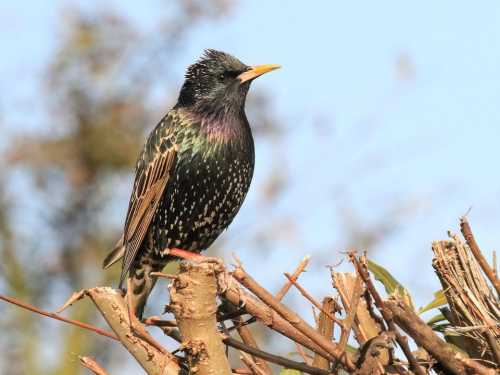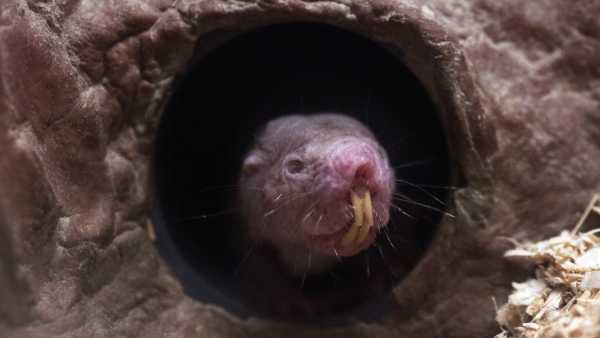
These birds control almost all of Eurasia. They are even there where they should never have been! Unfortunately for them, the “bourgeois” brought the bird to America and Australia, where the starling has successfully taken root. It seems that one continent was not enough for the avian invaders.
It would seem that how can a tiny creature 20-25 cm long harm anyone at all? One bird is really hardly capable of committing a crime. But a whole horde will beat up any disobedient one. The arrival of these rascals from the south means the beginning of a tough fight for housing for the rest of the city's birds.
The bird nests absolutely everywhere: in burrows, hollows, crevices of rocks and, of course, birdhouses. And God forbid a young family will not have enough space. Starlings will not climb into mortgage bondage, they will simply take up racketeering! The symbol of spring without a twinge of conscience drives woodpeckers, sparrows, pigeons from their legal dwelling!
Therefore, birdhouses are a vital necessity, if not for starlings themselves, then at least for other birds. By the way, about birds: you can only make a birdhouse from boards. Chipboard, plastic bottles, tetra packs and other inventions of mom's craftsmen only harm the birds. These materials are too fragile and toxic to become a full-fledged home even for a sparrow hawk, not like a starling.
But even their own home is not enough for them! They demand more! In a huge swarm, numbering several tens of thousands, starlings fly into the fields and gardens. Since they need to constantly fuel their hatred for their surroundings, the birds eat everything: cereals, fruits, berries. But for the sake of justice, in the spring and early summer these racketeers wake up craving for a protein diet. They take out tons of all sorts of crawling vermin from the fields: beetles, locusts, caterpillars, thereby unwittingly providing farmers with a huge service.
It would seem that these creatures can't even sing normally – their own song is so-so, a set of squeaks and whistles. But they can quite compete with famous parodists. Nightingales, larks, owls and many other birds have become the object of mockery of our hero. Some craftsmen are able to imitate dogs and frogs. And quite impudent creatures are even able to chatter like humans! The larger the flock, the more “words” the starlings of such a community know. Why do we need your parrots when we have our own, domestic version of a chatty bird!
Even in family life, the starling is a real scoundrel. At first, he sings serenades (and not his own!), shows off the living space taken from some unfortunate bird family, and is proud and sulky in every way in front of the female. And as soon as the deed is done, and the mother sits at home with 3-5 blue eggs, her husband jumps off to the neighbors. But, apparently, somewhere deep down, the bird still has a conscience. After all, he does not abandon his family, first or second.
Together, the parents feed their voracious babies. Mom and dad don't have to suffer with the spines for long. In 20 days, the chicks change their brown down sweater for a “metal-style jacket.” Having raised the first batch of babies, the couple (or trio) goes into the second round, releasing two broods per season.
But come August, parents and offspring head south. To keep their feathered asses safe, numerous flocks of birds unite. But even when it comes to life and death, starlings manage to mercilessly troll predators.
Seeing danger, starlings act as a single organism. The feathered biomass performs stunning somersaults in the air, confusing and disorienting the enemy. The predator does not see the birds separately, it sees a living cloud, from which it is simply impossible to pluck someone out!
The impressive synchronicity is achieved because each starling in the flock mirrors the movements of its right and left neighbor. For humans, this spectacle is certainly fascinating. But for predators, these dances drive them crazy!
Starlings also cause a lot of trouble for people. If earlier the Spaniards fried starlings like your KFC nuggets, and the French prepared pâté, now it is better not to touch them at all, because they are more expensive. Firstly, a flock of starlings complicates the work of air transport. Because of their love of open spaces and fields, the birds often appear at airfields.
But the threat to airliners is a trifle compared to the number of diseases that starlings carry. By breathing in the fumes from their droppings, you can easily catch, for example, histoplasmosis, an unpleasant fungal infection. That is why in some countries starlings are not ashamed to be shot to keep both the planes intact and the lungs clean.





